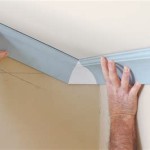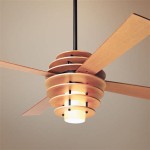Determining the Appropriate Ceiling Fan Size for a 10' x 10' Room with 215cm Ceiling Height
Selecting the correct size ceiling fan for a given room is crucial for achieving optimal air circulation and energy efficiency. An undersized fan will struggle to effectively cool or heat the space, while an oversized fan can be overpowering and potentially create unwanted drafts. Several factors influence the ideal fan size, including the room's dimensions, ceiling height, and the intended purpose of the fan. This article will focus on determining the appropriate ceiling fan size for a 10' x 10' room (approximately 3.05m x 3.05m) with a ceiling height of 215cm (approximately 7.05 feet), considering these variables.
The primary determinant of ceiling fan size is the room's square footage. A 10' x 10' room has a square footage of 100 square feet. While this provides a basic guideline, the ceiling height of 215cm introduces a nuanced consideration. Standard recommendations often assume a ceiling height of 8 feet or higher. Therefore, assessing the impact of a lower ceiling height is essential for making an informed decision about the optimal fan size.
Generally, ceiling fan sizes are categorized based on their blade span, which is the diameter of the circle the fan blades create when rotating. Common sizes range from 30 inches to 72 inches or more. For rooms around 100 square feet, a 42-inch to 44-inch ceiling fan is typically recommended. This range provides adequate airflow without being overwhelming in a smaller space. However, the lower ceiling height may necessitate a slightly smaller fan or a flush-mount model to maintain sufficient clearance between the fan blades and the floor.
Understanding the Impact of Lower Ceiling Height
The 215cm (7.05 feet) ceiling height presents a constraint that significantly impacts the selection process. Building codes and safety standards often dictate a minimum clearance of 7 feet between the floor and the fan blades. This clearance is critical to prevent accidental contact and ensure safe operation. With a 7.05-foot ceiling, this leaves a minimal 0.05 feet (approximately 1.5cm) of clearance if a standard fan with any drop is used. Therefore, careful consideration needs to be given to fan mounting.
Standard ceiling fans typically include a downrod, which extends the fan from the ceiling. In this scenario, using a downrod would be impossible due to the minimum clearance requirement. Therefore, a flush-mount or hugger-style ceiling fan is the appropriate choice. Flush-mount fans are designed to attach directly to the ceiling mounting bracket, minimizing the distance between the ceiling and the fan blades. These fans often have a shallower profile, allowing them to be safely installed in rooms with lower ceilings. Selecting a fan specifically designed for low-ceiling applications is paramount.
Even with a flush-mount design, it is important to meticulously measure the distance from the ceiling to the bottom of the fan blades after installation. Exceeding the available clearance, even by a small margin, could pose a safety hazard. If the clearance is insufficient, an alternative solution, such as a smaller fan or a different type of air circulation device, may be necessary. Ensuring compliance with local building codes is also essential.
Choosing the Right Fan Features for a Small Room
Beyond the size and mounting style, other fan features should be considered to optimize performance and aesthetics in a 10' x 10' room. The motor's efficiency and blade pitch play a crucial role in determining the fan's ability to move air effectively. A high-quality motor will operate quietly and efficiently, consuming less energy while providing adequate airflow. Blade pitch, measured in degrees, refers to the angle of the fan blades. A steeper blade pitch generally results in greater air movement, but it can also increase noise levels.
For a small room, a fan with a moderate blade pitch and an energy-efficient motor is often the best choice. Look for fans with an Energy Star rating, which indicates that they meet specific energy efficiency standards. Consider the number of blades as well. While the number of blades can influence a fan's appearance, it doesn't necessarily correlate directly with improved airflow. Generally, fans with fewer blades (3-4) are more efficient at moving air than those with more blades (5 or more), especially in smaller sizes.
The inclusion of a light fixture can be a valuable addition, particularly if the room lacks adequate overhead lighting. However, be mindful of the overall height of the fan and light fixture combined, ensuring that it still meets the minimum clearance requirements. Choose a light fixture that provides sufficient illumination for the room without being too bright or overpowering. Dimmable light fixtures offer flexibility in adjusting the light level to suit different needs and preferences.
Selecting the Appropriate Blade Span and Style
While a 42-inch to 44-inch fan is generally recommended for a 100-square-foot room, the 215cm ceiling height necessitates a reassessment of this guideline. In this specific scenario, a slightly smaller blade span, such as 36-inch to 42-inch, might be a more suitable choice. This adjustment prioritizes maintaining adequate clearance and prevents the fan from feeling visually overwhelming in the limited vertical space.
The goal isn't always to maximize airflow, but rather to achieve a comfortable and balanced air circulation pattern. An overly powerful fan in a small room with a low ceiling can create noticeable drafts, which can be uncomfortable. A smaller fan, on the other hand, will distribute air more gently and uniformly. The shape and style of the fan blades can also influence airflow patterns. Experimenting with different blade designs, if possible, or consulting with a fan specialist, can help you find the optimal configuration for your specific room conditions.
Aesthetics play a significant role in ceiling fan selection. Consider the overall style and décor of the room when choosing a fan. A variety of finishes and designs are available, ranging from traditional to contemporary. Choose a fan that complements the room's existing aesthetic and adds to its visual appeal. Pay attention to details such as the blade finish, the motor housing design, and the light fixture style. Selecting a fan that harmonizes with the room's overall design will enhance its aesthetic appeal and create a more cohesive and inviting space.
Furthermore, consider the control mechanisms offered by the fan. Most modern ceiling fans come with remote controls, allowing for convenient adjustment of fan speed and light settings from anywhere in the room. Some fans are even compatible with smart home systems, enabling voice control and automated operation. Choosing a fan with convenient and user-friendly controls will enhance your overall experience and make it easier to maintain a comfortable environment in your 10' x 10' room with the restricted ceiling height.

Ceiling Fan Size Guide Threesixty Fans

What Size Ceiling Fan Is Best For Your Room

How To Select The Right Size For Every Room

Ceiling Fan Size Guide Delmarfans Com

Ceiling Fan Size Guide Delmarfans Com

Ceiling Fan Size Guide Delmarfans Com

Ceiling Fan Size Guide Threesixty Fans

Ceiling Fan With Led Ip 44 For Large Size White Lacquered Dc 130 Cm Faro Typhoon

Pin Page

Ceiling Fan Tda1600 I 160 Cm Industrial For Humid Environments
Related Posts








